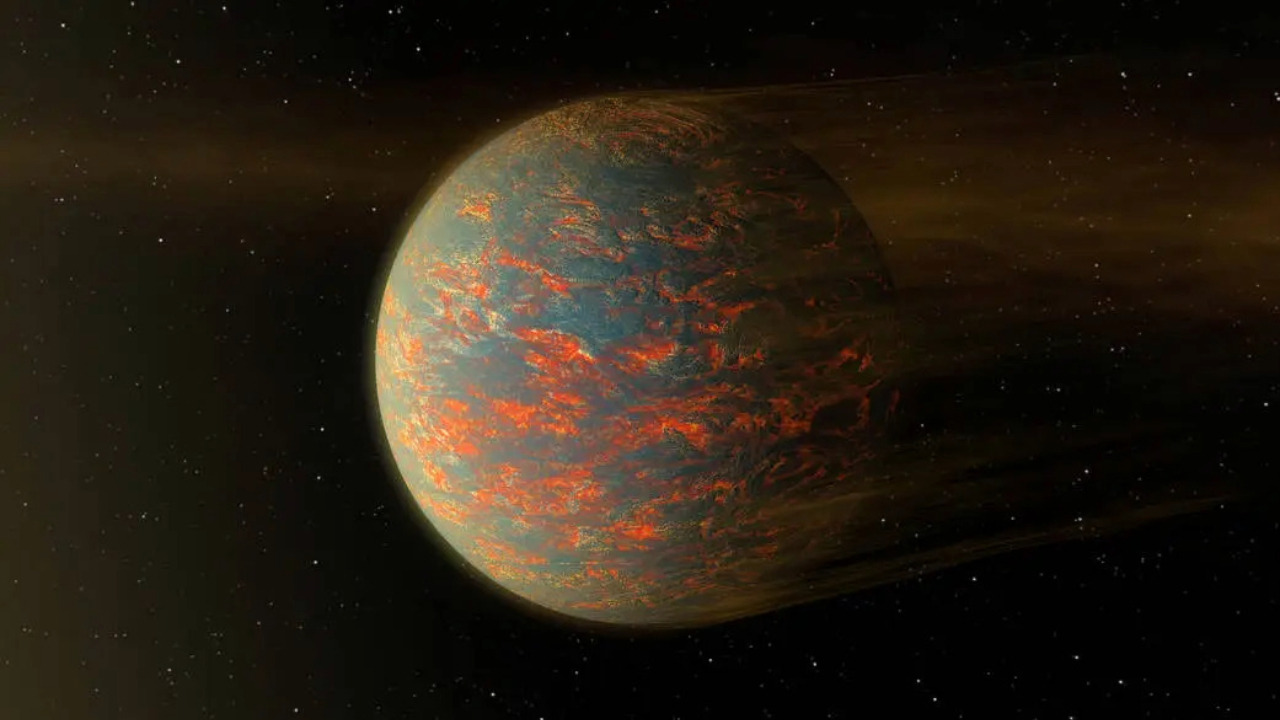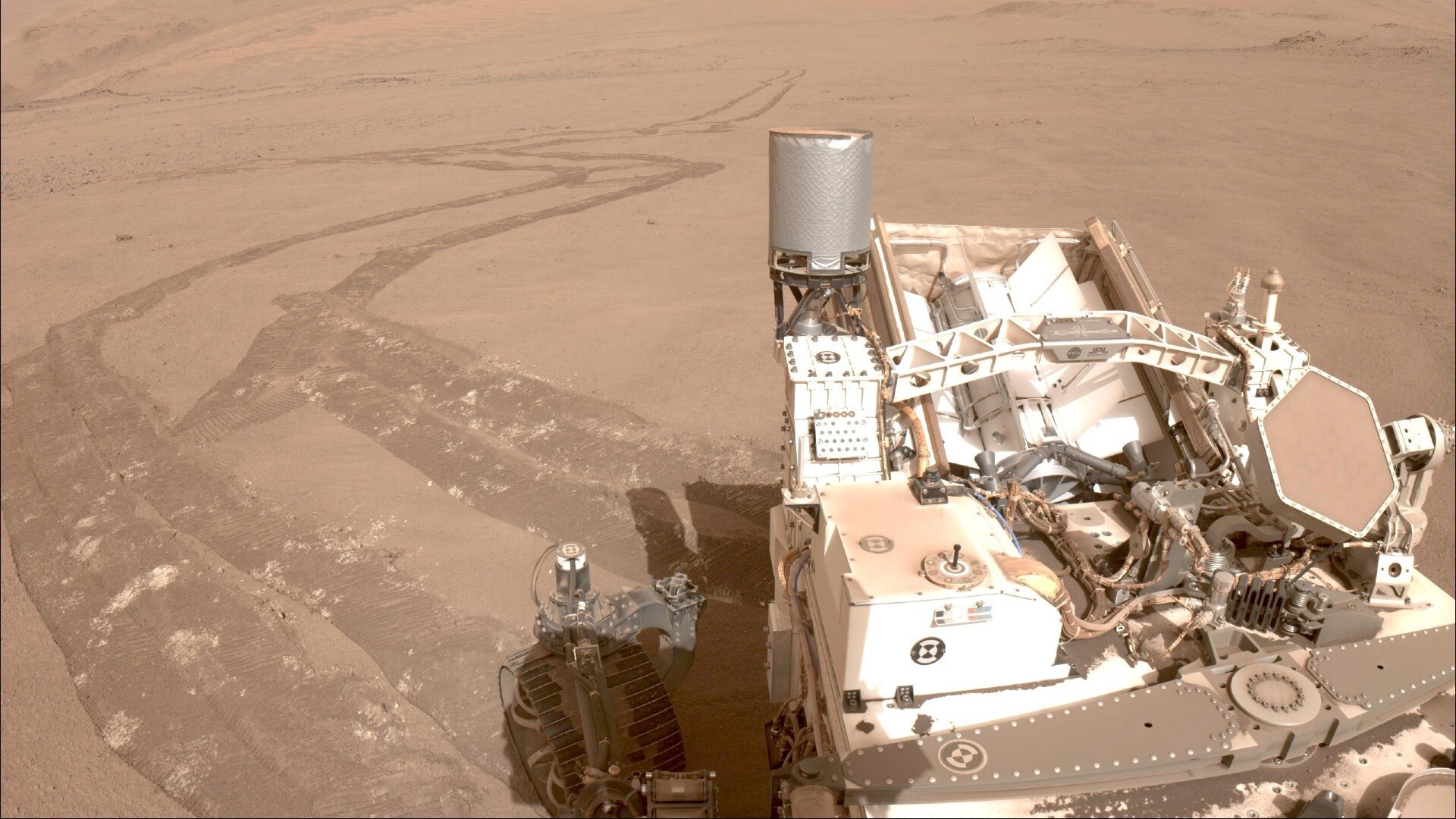Exotic 'lava worlds' are a hot new frontier in exoplanet science
"Lava planets are in such extreme orbital configurations that our knowledge of rocky planets in the solar system does not directly apply."

Astronomers may be starting to get the goods on lava planets.
These fiery worlds share a similar density to Earth but orbit so close to their host stars that their scorching daytime temperatures melt the very rocks they're made of, creating possible oceans of magma that cover their surface.
While lava worlds represent an exciting new frontier in exoplanet science, much remains unknown about their dynamics, interiors and evolutionary paths. "Lava planets are in such extreme orbital configurations that our knowledge of rocky planets in the solar system does not directly apply, leaving scientists uncertain about what to expect when observing lava planets," Charles-Édouard Boukaré at York University in Toronto, co-author of a new study about lava worlds, said in a statement.
Given that lava planets have been identified as key targets for observation with NASA's James Webb Space Telescope (JWST), with five different programs already planned to study them, Boukaré and colleagues developed a conceptual framework — a "blueprint" of sorts — that outlines possible key characteristics, such as chemistry, surface conditions and other distinctive traits, to guide astronomers in identifying and analyzing these planets.
Using a numerical model, the researchers predicted the long-term evolution of lava planets over billions of years, from their formation to the point where they achieve a "thermal steady state." By combining insights from geophysical fluid mechanics, exoplanetary atmospheres, and mineralogy, the study reveals how the intense internal dynamics and shifting compositions of these exotic worlds likely unfolds over time.
But the model's foundation was based on findings made closer to home. "These processes, though greatly amplified in lava planets, are fundamentally the same as those that shape rocky planets in our own solar system," Boukaré said.
Interestingly, while lava planets are predicted to start out mostly molten right after they form, much like magma oceans on young planets in our solar system, they solidify nearly as quickly as their solar system counterparts despite being heated on their star-facing side. (Lava worlds are "tidally locked" to their host stars, with one hemisphere always in darkness and the other always in the very bright light.)
Breaking space news, the latest updates on rocket launches, skywatching events and more!
What makes lava planets unique is that, unlike rocky planets in our solar system, they maintain a shallow magma ocean on their sun-facing side for billions of years, even as their interiors slowly cool. Along the edges of this magma ocean, crystals continuously form from the molten rock, causing a constant separation of different chemical components between the solid crystals and the remaining liquid magma, according to the new study.
This ongoing process shapes and changes the planet over time, so the silicate atmosphere of an older lava planet reflects a chemically changed magma ocean — not the planet's original makeup. This means it's possible to tell the age of a lava planet by studying its atmosphere.
"Unlike the relatively low-density short-period exoplanet 55 Cancri e, bona fide lava planets are expected to have lost all their volatiles to space, but their 2,000–3,000 K[elvin; 1,727 to 2,727 degrees Celsius] daysides support an atmosphere of vaporized silicate rocks, which may be observable with the James Webb Space Telescope (JWST)," the researchers wrote in their paper, which was published in the journal Nature on July 29.
Additionally, young lava planets have relatively warm nightside temperatures around 1,500 K (1,227 degrees C), caused by heat from internal convection. As they age, without additional heat sources, their nightside cools significantly. A planet's current thermal state reflects its entire thermochemical history, making mantle temperature a key to understanding planetary evolution.
Measuring nightside temperatures is now possible with the JWST, providing insights into a planet's interior. Future telescopes like the Extremely Large Telescope, which is currently under construction in Chile, may also analyze silicate atmospheres, helping to reveal the complex interactions between a planet's atmosphere, molten surface and interior minerals.
What started as a "highly exploratory effort with few initial expectations" has grown into an exciting new frontier in exoplanet science, providing clear guidelines to help astronomers identify and study this new class of planets.
These predictions have played a key role in the team securing 100 hours of valuable observation time on JWST.
"We really hope we can observe and distinguish old lava planets from young lava planets. If we can do this, it would mark an important step toward moving beyond the traditional snapshot view of exoplanets," concluded Boukaré.

A chemist turned science writer, Victoria Corless completed her Ph.D. in organic synthesis at the University of Toronto and, ever the cliché, realized lab work was not something she wanted to do for the rest of her days. After dabbling in science writing and a brief stint as a medical writer, Victoria joined Wiley’s Advanced Science News where she works as an editor and writer. On the side, she freelances for various outlets, including Research2Reality and Chemistry World.
You must confirm your public display name before commenting
Please logout and then login again, you will then be prompted to enter your display name.
